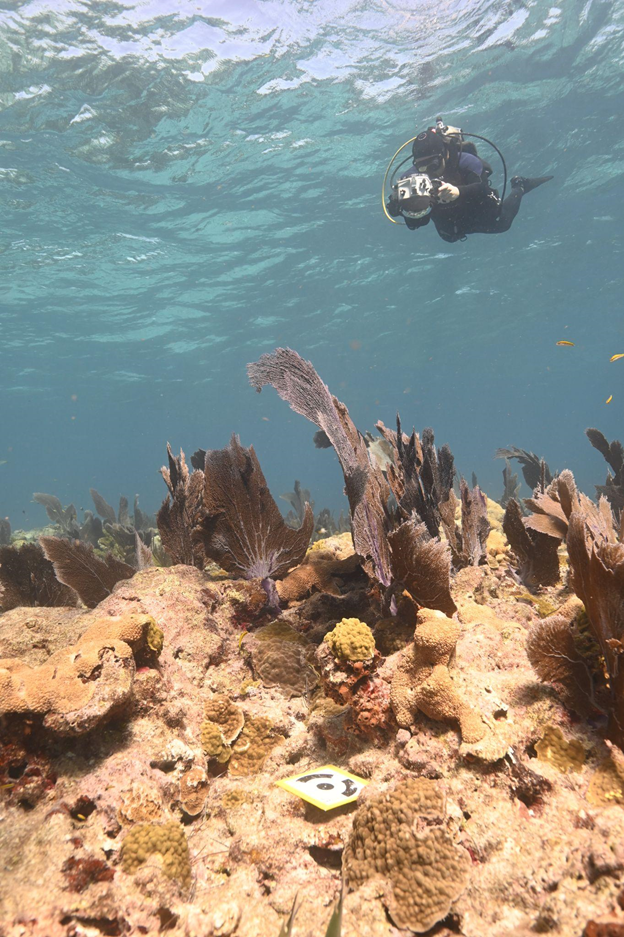
Mission: Iconic Reefs in the Florida Keys National Marine Sanctuary (FKNMS) is the largest coral restoration project in the U.S. to date. NCCOS is working with FKNMS to image portions of the seafloor in both restored and unrestored coral reef areas to measure the progress of the restoration and enable corrections, if needed. NCCOS is also analyzing this large-area imagery to detect changes in coral colonies and populations and changes in reef communities that result from the restoration work.
Why We Care
To date, Mission: Iconic Reefs is the largest coral restoration project for U.S. coral reefs. Seven reefs spanning the reef tract in the Florida Keys National Marine Sanctuary will be restored over the twenty years of the project. It is critical to evaluate the effects of this restoration work on coral populations and reef communities, both to measure the progress of restoration and to inform potential improvements in restoration methods and approaches. NCCOS is partnering with the Florida Keys National Marine Sanctuary to evaluate restoration success at these Iconic Reefs.
What We Are Doing
- We are using large-area imaging (photogrammetry, Structure From Motion) of the seafloor to look at changes from restoration to coral populations and coral reef communities.
- We are evaluating how coral restoration changes the size, condition and health, survival, density, and distribution of different coral species, both native and restored, as well as changes in the benthic (seafloor) cover of corals, macroalgae, sponges, and other reef organisms over time.
- We are co-leading the Mission: Iconic Reefs Monitoring and Research Working Group and the development of the Mission: Iconic Reefs Monitoring and Research Plan to outline the vision and action plan for evaluating restoration success over time, from seascape to genetics and from corals to fish and herbivorous invertebrates.
The project is funded by NOAA’s Coral Reef Conservation Program.
